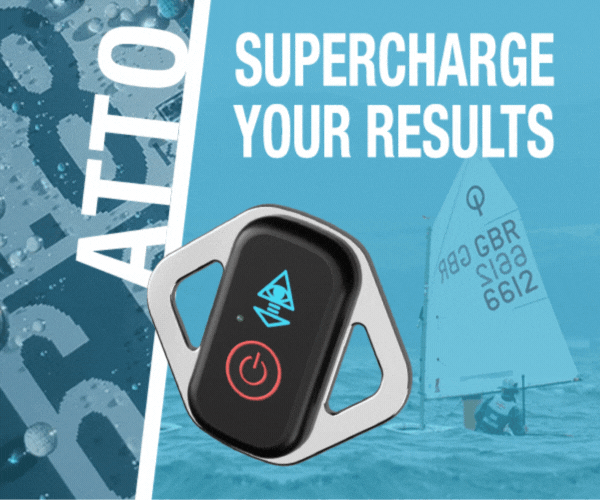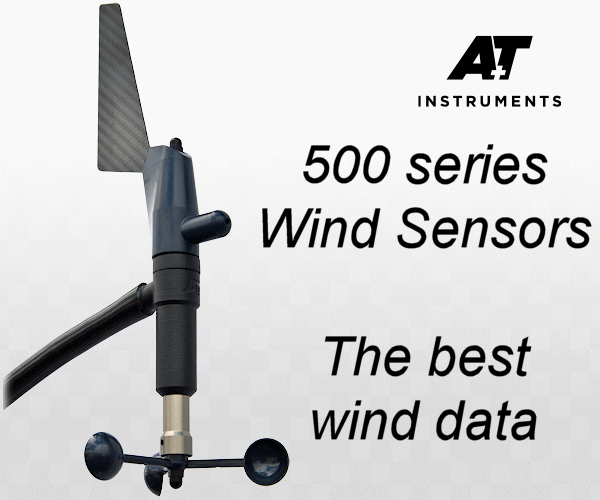




-(1)-202408140552.gif)






Boats for sale
| Laser 140101 Tynemouth |
 |
| Laser 161752 Tynemouth |
 |
| Laser 28 - Excellent example of this great design Hamble le rice |
 |
List classes of boat for sale |
Slipping Main Halyard |
Post Reply 
|
Page <123> |
| Author | |
Noah 
Really should get out more 
Joined: 29 Dec 04 Location: United Kingdom Online Status: Offline Posts: 611 |
 Post Options Post Options
 Quote Quote  Reply Reply
 Topic: Slipping Main Halyard Topic: Slipping Main HalyardPosted: 20 Apr 15 at 9:13am |
|
Hauling the sail up with the halyard running thru the cleat will quickly wear the cleat jaws. I make sure the halyard is running beside the cleat until the sail is up, then flip the rope into the jaws and finish pulling up the last inch or two. I have two clam cleats and a vectran halyard. If it's seriously windy I haul down on the cunno after hoisting the main, then let it off & re-tension the halyard. Stops the sail slipping down under cunno, but makes it a right nightmare dropping the main after sailing. I just hate those racks - I find them too fiddly. Next mast will probably have a halyard lock.
|
|
|
Nick
D-Zero 316 |
|
 |
|
NickA 
Really should get out more 
Joined: 30 Mar 05 Location: United Kingdom Online Status: Offline Posts: 784 |
 Post Options Post Options
 Quote Quote  Reply Reply
 Posted: 20 Apr 15 at 6:08pm Posted: 20 Apr 15 at 6:08pm |
|
The mast and hence cleat are pretty new (15 months) and the halyard is routed so that it doesn't run through the cleat when hoisting. Shouldn't have worn out yet.
My first boat (a laser 2) had a hook rack for the jib halyard and it was a right pain in the bum - but that was because the halyard also set the rig tension - I could never get enough rig tension on. Not an issue on the main of a boat with independent rake and rig tension adjusters. Various knotty solutions will work for now - JohnJack's slipknot under the cleat appeals, and yes a picture would be a help! Should think it's essential with a D12 halyard; didn't think D12 would cleat at all.
Edited by NickA - 20 Apr 15 at 6:10pm |
|
|
Javelin 558
Contender 2574 |
|
 |
|
Roger 
Really should get out more 

Joined: 23 Mar 04 Location: Somerset Online Status: Offline Posts: 524 |
 Post Options Post Options
 Quote Quote  Reply Reply
 Posted: 20 Apr 15 at 7:12pm Posted: 20 Apr 15 at 7:12pm |
|
Of course the best way to get D12 to lock in a V type cleat is to give it a core, easily done by sliding in a length of the same rope in the area where it cleats, 2 min job, but essential to get a hollow core rope to cleat fast.
|
|
 |
|
NickA 
Really should get out more 
Joined: 30 Mar 05 Location: United Kingdom Online Status: Offline Posts: 784 |
 Post Options Post Options
 Quote Quote  Reply Reply
 Posted: 20 Apr 15 at 10:17pm Posted: 20 Apr 15 at 10:17pm |
|
In the area WHERE it cleats? Or in the area JUST BELOW the cleat?
A dyneema halyard with some way of locking it in a v-cleat would be easier than making one the exact right length to hook over a hook rack! Plus you only need a mast length of expensive thick stuff with something cheaper (and only strong enough to get the sail to the top) to pull it through. I'm thinking 4mm and 2.5mm. I have 2.5mm dyneema twinners and they cleat fine without a core; but only due to the amazing metal jawed Mach2 cam cleats, which will grip anything and have your finger off in an argument (sadly no longer available).
|
|
|
Javelin 558
Contender 2574 |
|
 |
|
craiggo 
Really should get out more 

Joined: 01 Apr 04 Location: United Kingdom Online Status: Offline Posts: 1810 |
 Post Options Post Options
 Quote Quote  Reply Reply
 Posted: 20 Apr 15 at 10:47pm Posted: 20 Apr 15 at 10:47pm |
|
Nick, if you are thickening D12 with a core then you need to do it for the region in the cleat + an inch or two on either side. This is standard practice on spinnaker halyards but I have to say I dont know many people using D12 for main halyards.
I have found that boats which rely on standing rigging to provide mast pre-bend are suitable for hook racks and those which rely on main halyard tension for pre-bend need a cleat such that additional purchases can be added to the halyard once nearly up to assist with increased tension to induce bend. The RS600 being a case in point. One solution sometimes used is to use two cleats or pack out the top end of the cleat to get a better bite angle. |
|
 |
|
Roger 
Really should get out more 

Joined: 23 Mar 04 Location: Somerset Online Status: Offline Posts: 524 |
 Post Options Post Options
 Quote Quote  Reply Reply
 Posted: 20 Apr 15 at 10:54pm Posted: 20 Apr 15 at 10:54pm |
In the area where it cleats, providing it's long enough just cut 20-30cm off the end and slide it inside the cover, the cover is still the bit in contact with the cleat but you will be amazed how much better it holds. Used this on a Phantom when I had one and it never slipped, and you can need lots of cunningham tension on a Phantom when it blows. |
|
 |
|
NHRC 
Posting king 
Joined: 13 Dec 13 Location: Lymington Online Status: Offline Posts: 102 |
 Post Options Post Options
 Quote Quote  Reply Reply
 Posted: 21 Apr 15 at 6:25am Posted: 21 Apr 15 at 6:25am |
|
If you thicken the halyard with an insert please remember to taper the insert by cutting away strands gradually
This makes the insert roll over you sheave block at the top easier and prevents creating a hard point where the rope thickens that massively reduces the strength of the rope. |
|
 |
|
Puddlebuster 
Groupie 
Joined: 29 Oct 12 Online Status: Offline Posts: 43 |
 Post Options Post Options
 Quote Quote  Reply Reply
 Posted: 21 Apr 15 at 8:02am Posted: 21 Apr 15 at 8:02am |
|
Had the same problem with a Phantom and I decided to minimise the amount of rope available to stretch by having a small cleat at the top of the mast. The other benefit is there is no extra compression through the mastonly when you decide to apply heaps of cunningham.
Further when the affected peice chafes you can just cut it and you only lose six inches of halliard rather than reaching the point where it runs the full length of the mast twice and is too short even then. Have used this on my last three carbon mast and works fine. The tail is just attached to a small peice of elastic at the base to keep it tentioned and tidy it up. Edited by Puddlebuster - 21 Apr 15 at 8:32am |
|
 |
|
tickel 
Far too distracted from work 
Joined: 21 Dec 05 Location: United Kingdom Online Status: Offline Posts: 408 |
 Post Options Post Options
 Quote Quote  Reply Reply
 Posted: 21 Apr 15 at 8:29am Posted: 21 Apr 15 at 8:29am |
|
I would have thought a Jav would have a wire halyard....I am sure mine did. Why not have an external halyard and the cleat at the top? Tasar has a wire with a 'pip' on it and a metal 'V' cleat 3" from the sheave at the top.There is only 6' of wire to stretch. Byte has a similar solution but with string and a cleat. The only problem is that you need to change your glasses to see up there and on the Byte which runs with loaded cunningham it tends to jam.
|
|
|
tickel
|
|
 |
|
djdhi 
Groupie 
Joined: 06 Oct 07 Online Status: Offline Posts: 44 |
 Post Options Post Options
 Quote Quote  Reply Reply
 Posted: 21 Apr 15 at 6:42pm Posted: 21 Apr 15 at 6:42pm |
|
|
|
 |
|
Post Reply 
|
Page <123> |
| Forum Jump | Forum Permissions  You cannot post new topics in this forum You cannot reply to topics in this forum You cannot delete your posts in this forum You cannot edit your posts in this forum You cannot create polls in this forum You cannot vote in polls in this forum |
Bulletin Board Software by Web Wiz Forums® version 9.665y
Copyright ©2001-2010 Web Wiz
Change your personal settings, or read our privacy policy
Copyright ©2001-2010 Web Wiz
Change your personal settings, or read our privacy policy











 Printable Version
Printable Version Delicious
Delicious Digg
Digg Facebook
Facebook Furl
Furl Google
Google MySpace
MySpace Newsvine
Newsvine reddit
reddit StumbleUpon
StumbleUpon Twitter
Twitter Windows Live
Windows Live Yahoo Bookmarks
Yahoo Bookmarks Topic Options
Topic Options